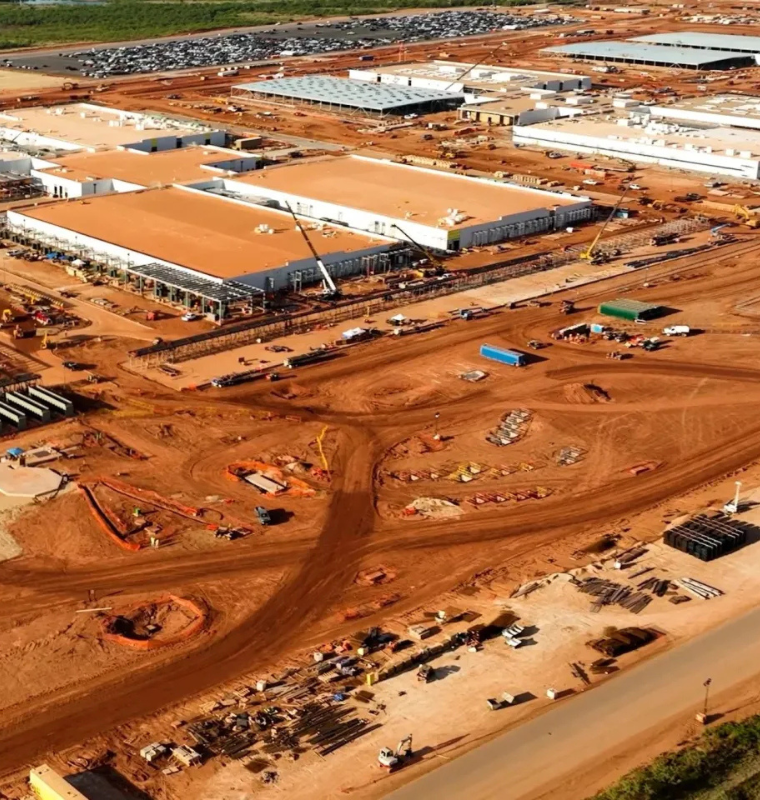The Rise of Silicon Valley’s “Neoprimes”: How Tech Startups Are Redefining America’s Defense Industry
The Rise of Silicon Valley’s “Neoprimes”: How Tech Startups Are Redefining America’s Defense Industry
By
Leah Rosenfeld
Last updated:
October 6, 2025
First Published:
October 6, 2025

Photo: Central Florida Tech Grove
Silicon Valley’s Next Big Disruption: Defense
Silicon Valley, long known for birthing software empires and consumer technology revolutions, is now rewriting the playbook for national defense. A new generation of defense tech startups—often called “neoprimes”—is attracting massive venture capital investments while challenging traditional military contractors like Lockheed Martin, Boeing, Northrop Grumman, General Dynamics, and RTX (formerly Raytheon).
These emerging players, such as Anduril Industries, Palantir Technologies, and Shield AI, are rapidly becoming central to the U.S. national security ecosystem. With a software-first approach, they’re developing AI-driven surveillance systems, autonomous drones, and next-generation defense infrastructure that rivals what billion-dollar legacy defense contractors have built over decades.
Anduril, for instance, reached a valuation of $30.5 billion in 2025 following its most recent funding round—placing it among Silicon Valley’s most valuable private defense tech firms.
“There’s more capital than ever flowing into what we call the ‘neoprimes,’” said Jameson Darby, co-founder of MilVet Angels (MVA). “While it’s still a small slice of the overall defense budget, the momentum is undeniable.”
Billions Flowing Into a New Defense Race
According to a JPMorgan analysis, venture funding for U.S.-based defense tech startups reached $38 billion in just the first half of 2025, signaling that the total could surpass the $72 billion record set in 2021.
This surge reflects a broader shift in global defense priorities. With heightened tensions in Eastern Europe, the South China Sea, and cyberspace, governments are increasingly turning to agile, AI-driven firms for faster innovation cycles.
Unlike the traditional “primes,” these startups are built to operate at the pace of modern technology—deploying software updates in weeks, not years. Their focus on dual-use technologies—systems that can serve both civilian and military markets—is also attracting investors who see broader commercial potential.
The Modern Battlefield Is Digital
For decades, the Pentagon’s defense priorities centered on counterterrorism. But today, the U.S. Department of Defense is focused on “great power competition,” targeting advancements in hypersonics, cybersecurity, energy resilience, and space technology.
“The nature of war has shifted,” said Ernestine Fu Mak, co-founder of MVA and founder of Brave Capital. “We’re no longer just fighting on land, sea, and air—the battles are also being waged in cyber and space domains. The modern battlefield is multidimensional and deeply digital.”
These new defense firms are creating technologies that merge artificial intelligence, machine learning, and automation. For example:
- Shield AI builds autonomous drone systems capable of mapping and navigating complex environments without GPS.
- Hermeus is developing hypersonic aircraft capable of speeds over Mach 5, potentially transforming both defense logistics and commercial aviation.
- Palantir continues to expand its AI data integration platforms, now used in more than 20 allied defense networks worldwide.
“AI and autonomy are force multipliers,” said Darby. “They’re revolutionizing how militaries operate and how they prepare for conflicts that may never be fought conventionally.”
Government Support and Investor Confidence
The U.S. government’s recent policy shifts have made it clear: innovation is a defense priority. Programs like the Defense Innovation Unit (DIU) and AFWERX are bridging the gap between startups and the Pentagon, providing early-stage contracts and pilot programs.
The message to investors is equally strong. As Fu Mak notes, “The Department of Defense is signaling to the private sector that they need rapid, scalable innovation—and that message is translating into capital deployment.”
These signals have encouraged venture syndicates like MilVet Angels, whose 250 members include former military leaders, Wall Street executives, intelligence officers, and tech founders. Together, they’ve funded companies such as Aetherflux, Ursa Major, and Anduril, forming what Mak calls the “new guard” of American defense.
“The ‘neoprimes’ don’t just build technology—they build deterrence,” said Mak. “Their mission is not to wage war but to prevent it.”
The New Guard: Redefining National Security
In September 2025, MilVet Angels officially launched publicly after years of quiet investments. Their vision goes beyond profit: to strengthen America’s defense ecosystem through collaboration between technologists and veterans.
Modern defense, they argue, demands both “the warrior’s insight” and “the builder’s innovation.” By combining these perspectives, Silicon Valley is crafting a defense future rooted in agility, deterrence, and advanced technology.
This collaboration is critical as threats evolve—from AI-driven cyberattacks to autonomous warfare systems. As global powers compete for technological dominance, the role of these startups becomes not just economic, but existential.
“Every piece of innovation we build serves one purpose,” said Mak. “To deter aggression and protect stability. The stronger our innovation ecosystem, the safer our world becomes.”
A Shift Too Big to Ignore
The transformation of defense technology mirrors Silicon Valley’s greatest strength—its ability to disrupt slow-moving industries through speed, software, and scale. While legacy giants still dominate government contracts, the tide is clearly turning.
Startups like Anduril, Palantir, and Shield AI are proving that national security can evolve at the pace of innovation. With billions in funding, global partnerships, and an expanding technological edge, the “new guard” of defense tech may soon become America’s frontline innovators.
Popular articles
Subscribe to unlock premium content
Why Consumers Buy Limited-Edition Fashion and Beauty Products

How K-Beauty Changed the Global Skincare Industry and Consumer Expectations

How Streetwear Became a Billion-Dollar Industry From Niche to Mainstream

Why Consumers Buy Limited-Edition Fashion and Beauty Products

How K-Beauty Changed the Global Skincare Industry and Consumer Expectations

Why Consumers Buy Limited-Edition Fashion and Beauty Products









